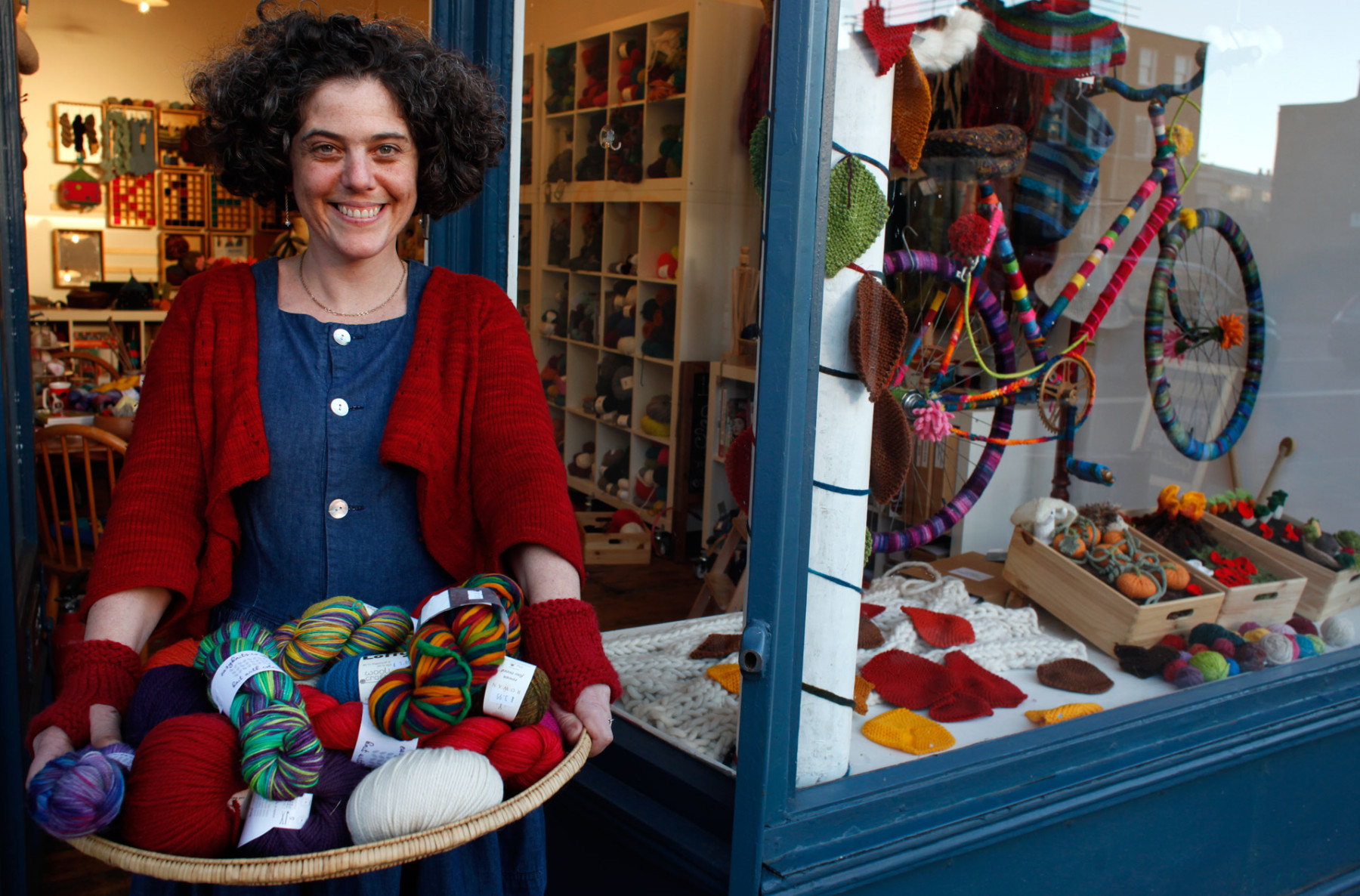A knitter walks into a wool shop. They undo their jacket to reveal an astonishingly beautiful and complicatedly cabled cardigan which has the look of espaliered apple trees interlaced with roses. They take off their delightfully fairisled beret and unwrap a deliberately unevenly striped scarf and lay them on a chair. Both are patterned with complementary shades of left over sock yarn scraps which just happen to look like the colour scheme of a painting by Klimt. A detailed discussion begins with the shop keeper about the technicalities of the pattern, the modifications and the yarn.
A novice knitter who’s been sitting at the table looks up awe-struck, tries to make sense of the details in the conversation, and then turns back to the 3rd row of the 24 stitches she’s just managed to cast on for her very first project – a garter coffee cup cosy – to repeat the in-round-catch-off routine. “That’s going to be me,” she says to herself. “I can do this. I’ve nearly finished 3 rows, and it’s looking pretty ok now, especially since the lady sorted out that funny hole. I’m going to get really good at this and then I’m going to understand what those knitters are talking about and make a cabled sweater for the winter. “
Another knitter is busy choosing wool for their next project. She fell out with the last one at the separation for the sleeves, on account of the colours just not working together like they were meant to, and is searching for new inspiration. She looks up at the cabled knitter and is momentarily mesmerised by the textured rose pattern. But the moment passes. Realistically it’s never going to happen. She’s been looking forward to re-watching that Icelandic thriller with the emotionally burdened detective (yes, that one). Subtitles and cable charts? It doesn’t end well, especially when knitting-concentration energy comes from whatever is left over after picking up the kids, getting the washing on, and doing supper. She’s dreaming of rows of stocking stitch with a single passing-go stitch marker. Oh yes, and watching the detective in the snow in his yoked sweater.
Also present is a recent Sweater Club finisher who’s popped in for some advice about the ribbing at the bottom and has ended up having to undo it for the third time – right number of stitches this time, wrong needle size so it still doesn’t fit nicely. Ripping back the knitting is starting to feel like sliding down a snake on a board game, past where he finally nailed German short rows, and past getting to grips with Make 1 Left and Make 1 Right. Why is getting the right stitches in the right order so hard? And will he ever get to nonchalantly walk into a wool shop wearing an espaliered apple tree on his cardigan, or have left-over scraps that accidentally look like the paint pallette of an impressionist painting? He hunches under a decidedly uncreative, unattractive cloud of knitting envy and skills pessimism.
Knitting moods can take us into different zones and the prompts which get us there come from all manner of sources: Jamie Perez’s brown sweater, a puckered hand woven silk scarf in 3 shades of red, the knitter who sat next to you at Knit Night, or Beth’s shawl in Little Women.
When the mood is about inspiration it can power you through mastering unfamiliar techniques, rows that are bejillions of stitches long, and hours of knitting that keep you up way past your bed time. By contrast, misplaced feelings of stitchy inferiority can leave your knitting mojo and your project abandoned and forlorn. Social media plays a precarious role here – don’t let the creativity of the knitters that surround you turn into a competition. Comparisons are odious and even more than that, not what knitting is about. Be inspired by all means, but most of all be at peace with what you’re making. If you’re knitting, you’re a knitter by definition. And that’s good enough for all of us.

